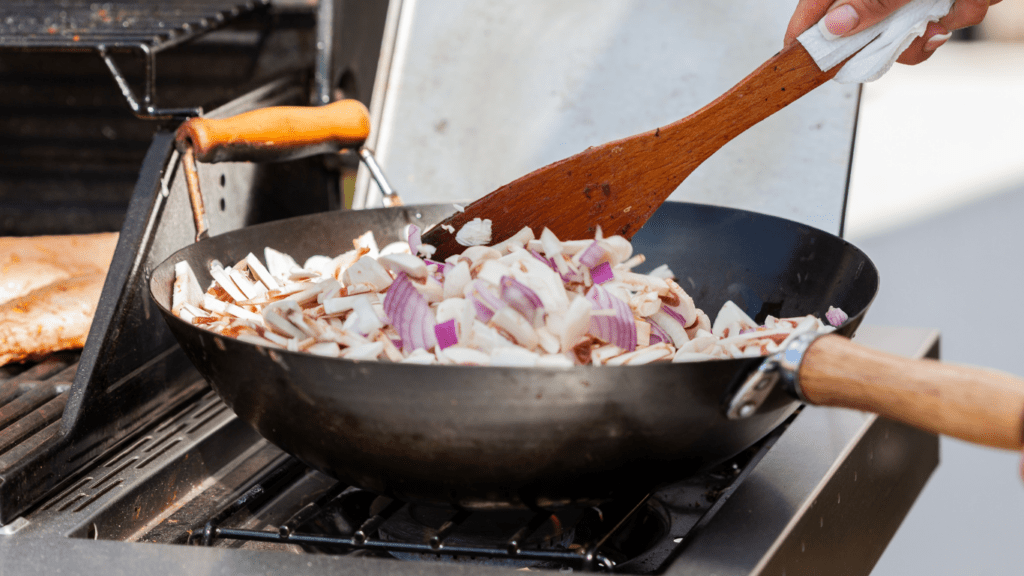Stepping into the realm of culinary mastery, I delve into the exquisite world of sautéing—a cooking technique that elevates flavors and textures to create perfectly cooked dishes. Sautéing is not just about applying heat; it’s a dance between ingredients and the pan, where timing and finesse are key.
In this culinary journey, I’ll unravel the secrets behind mastering the art of sautéing, empowering you to create dishes that tantalize the taste buds.
With each sizzle and aromatic waft, sautéing transforms raw ingredients into culinary delights. The marriage of heat, oil, and motion in the pan unlocks a symphony of flavors that can turn a simple meal into a gourmet experience.
Join me as I explore the techniques and nuances of sautéing, guiding you towards culinary excellence with every dish you create.
Exploring the Basics of Sautéing
Sautéing is a fundamental cooking technique that can elevate the flavors and textures of dishes. It requires precision and quick hands to ensure ingredients are cooked to perfection. In sautéing, the marriage of heat, oil, and motion in the pan is crucial for achieving delicious results. Let’s delve into the essential aspects of sautéing to unlock its full potential in your culinary creations.
Mastering Heat Control
When it comes to sautéing, mastering heat control is crucial for achieving perfectly cooked dishes. Let’s dive into the key aspects that contribute to this mastery:
Understanding Cooking Temperatures
I always stress the importance of understanding cooking temperatures when sautéing. Different ingredients require different heat levels to cook perfectly. For instance, delicate ingredients like fish or mushrooms need lower heat to prevent burning, while meats may need higher heat for a good sear.
Managing Oil Temperature
In sautéing, managing oil temperature is a skill that can elevate your dishes. It’s essential to heat the oil properly before adding ingredients to the pan. Maintaining the right oil temperature ensures even cooking and helps avoid a greasy end result. Remember, adjusting the heat during cooking is just as important as starting with the correct temperature.
Selecting the Right Pan
When choosing a pan for sautéing, I consider several key factors to ensure optimal cooking results. The right pan can significantly impact the outcome of your dishes, so it’s crucial to make an informed decision based on the following considerations:
- Material: Opt for pans made of stainless steel, cast iron, or copper for their excellent heat conduction properties. These materials distribute heat evenly, preventing hot spots and ensuring uniform cooking.
- Size: Select a pan that accommodates the amount of food you’re sautéing without overcrowding. Overcrowding can lead to steaming rather than sautéing, affecting the texture and flavors of your dish.
- Shape: Choose a pan with sloped sides to facilitate tossing and flipping ingredients effortlessly. This design promotes even cooking by allowing food to move around easily during the sautéing process.
- Handle: Ensure the pan has a sturdy, heat-resistant handle that provides a secure grip. A comfortable handle is essential for maneuvering the pan comfortably and safely while sautéing.
By carefully considering these aspects when selecting a pan for sautéing, you can set yourself up for success in creating perfectly cooked dishes bursting with flavor and texture.
Perfecting Sautéing Techniques
Exploring various sautéing techniques can elevate your cooking skills and take your dishes to the next level. Let’s delve into some essential methods to help you master the art of sautéing like a pro.
- Proper Heat Control: Heat control is crucial in sautéing as it allows ingredients to cook evenly without burning. Maintaining medium-high heat ensures a perfect sear on meats and vegetables, locking in flavors and juices.
- Continuous Motion: Keep ingredients moving in the pan by tossing or flipping them regularly. This motion prevents sticking and promotes uniform cooking, resulting in beautifully caramelized surfaces and tender interiors.
- Ingredient Preparation: Ensure ingredients are cut uniformly to guarantee consistent cooking. Smaller pieces cook faster, while larger cuts retain more moisture. This balance is key to achieving perfectly cooked dishes.
- Seasoning: Season ingredients throughout the cooking process to layer flavors effectively. Sprinkling salt and pepper at different stages enhances taste profiles, creating harmonious blends in every bite.
- Deglazing: Deglazing the pan with liquids such as broth, wine, or vinegar after sautéing adds depth to dishes. Scrape up the flavorful browned bits from the bottom of the pan to incorporate rich, concentrated flavors into sauces or gravies.
By honing these sautéing techniques, you’ll have the skills to cook delectable meals that are not only visually appealing but also bursting with complex flavors.



 Founder
Nicoleine is the visionary behind Food Meal Trail, dedicated to inspiring healthier eating habits. With a passion for culinary arts and nutrition, she combines her expertise to provide readers with innovative meal ideas and cooking techniques. Nicoleine believes that food should be both nourishing and enjoyable, and she is committed to sharing her love for wholesome cuisine with the world.
Founder
Nicoleine is the visionary behind Food Meal Trail, dedicated to inspiring healthier eating habits. With a passion for culinary arts and nutrition, she combines her expertise to provide readers with innovative meal ideas and cooking techniques. Nicoleine believes that food should be both nourishing and enjoyable, and she is committed to sharing her love for wholesome cuisine with the world.